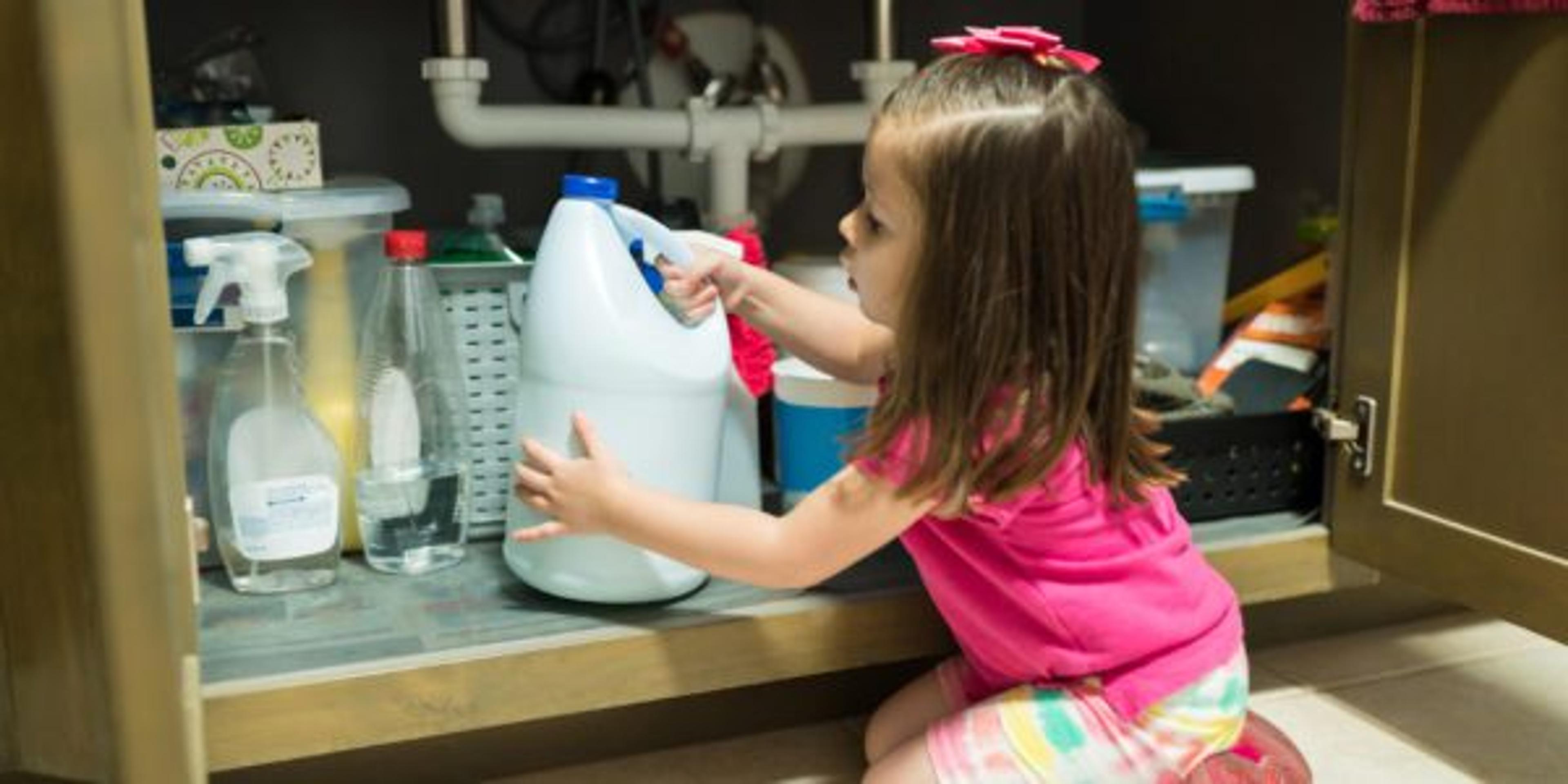Five Danger Zones in Your House for Pets and Children
Jake Newby
| 4 min read

For many of us, our homes are our sanctuary. We feel the safest inside of them, surrounded by family.
But there are areas in our homes that present danger to loved ones if not properly accounted for and protected.
Whether you have lived somewhere for years or have just moved into a new home, you could prevent emergency situations by identifying your house’s danger zones and taking the proper preventative safety measures.
Here are five potential danger areas in your home and what you can do to keep them child and pet-proof.
Underneath bathroom and kitchen sinks
Many of us store household cleaning products underneath our bathroom or kitchen sinks, products that include poisons like bleach and alcohol. Household cleaners are responsible for 10.5 percent of pediatric exposures reported to poison control centers across the country, according to the National Capital Poison Center.
If you have shelf space elsewhere, store these cleaning products inside high, out-of-reach cabinets. Otherwise, lock the cabinets with sliding, push-down or magnetic cabinet door locks.
Medicine cabinets and bathroom counters
The items on top of your sink could be just as harmful to your loved ones as the items underneath them.
Cosmetics and personal care products rank even higher than cleaning products on the aforementioned list of most common substances implicated in poison exposures, accounting for 11.4% of pediatric exposures. These include nail care, hair care and skin care products.
Parents should store all personal care products high and away in cabinets that can be locked or latched. Individual makeup bags should always be zipped or buttoned up, and never left unattended.
Child-resistant packaging on medication is a good safety net but should not be relied on completely. Consider buying a childproof medication lock box if someone in your household regularly takes medication. If some of that medication requires refrigeration, think about buying an icebox-style container.
Garage or shed
Sharp tools, paint, fertilizers and dangerous car-related products like antifreeze and gasoline are traditionally stored in garages or sheds, making this area of your backyard extremely dangerous if not properly protected.
You should of course keep all tools locked inside a toolbox and all chemicals stored high and away on tall shelves. Once again, locks are you friend and should be used on all garage doors and entry points. It helps to have a garage door automatic reversing mechanism installed that can rise on the occasion your child or pet is underneath the door when closing.
Keep all power tools and lawn equipment unplugged and out of reach, if possible, and store ladders horizontally.
Laundry room
The laundry room is another area of your house that likely contains poisonous chemicals, like detergent and cleaners with bleach. Keep these items sealed and stored away on high shelves.
The danger for slip and fall accidents is also present in the family laundry room, due to water from the machines and slippery liquids. Do your best to keep the floor dry and strongly consider having a floor drain installed if one isn’t installed already.
Be sure to keep washer and dryer lids closed so children cannot put their hands inside of operating machines, and so small pets don’t climb inside.
Electrical outlets
It goes without saying that electricity poses danger to children and pets, so child and pet-proofing electrical outlets is a must.
There are plenty of options out there to protect kids and pets from incurring an electrical shock, like outlet boxes, self-closing outlet covers, and plastic outlet covers. You can also buy “pet plugs,” which are non-toxic, clear plastic coverings designed to prevent pets from poking or licking the sockets.
Cord shorteners can also be a big help, as they allow you to store the excess of a long cord inside a receptacle that stops kids from pulling or tugging on them.
It doesn’t hurt to have conversations about these topics if your children are of age. Stressing the dangers these rooms and areas present could deter them from coming into harm’s way. A healthy home is a happy home!
Related content:
Photo credit: Getty Images





